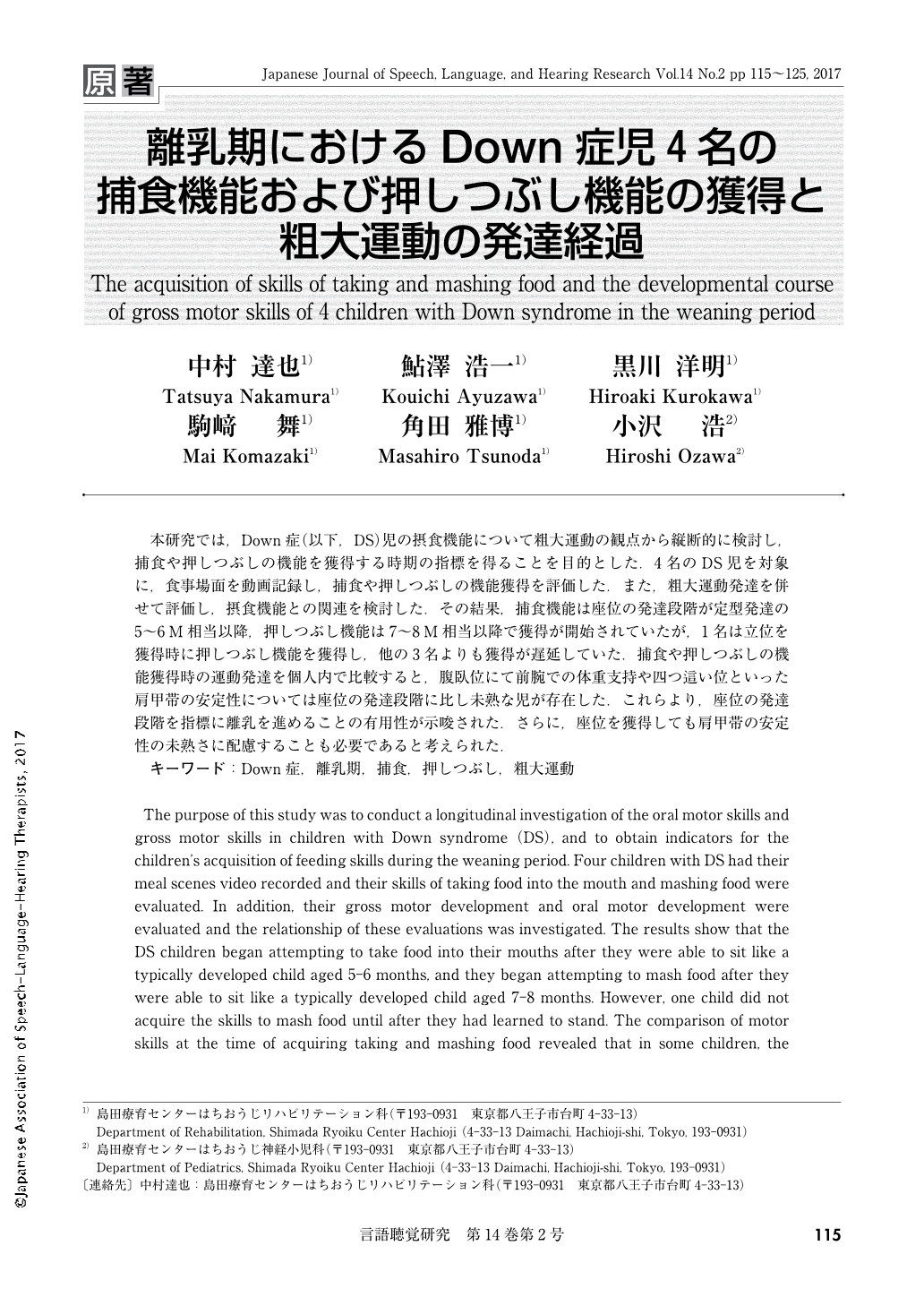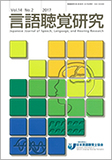Japanese
English
- 有料閲覧
- Abstract 文献概要
- 1ページ目 Look Inside
- 参考文献 Reference
- サイト内被引用 Cited by
本研究では,Down症(以下,DS)児の摂食機能について粗大運動の観点から縦断的に検討し,捕食や押しつぶしの機能を獲得する時期の指標を得ることを目的とした.4名のDS児を対象に,食事場面を動画記録し,捕食や押しつぶしの機能獲得を評価した.また,粗大運動発達を併せて評価し,摂食機能との関連を検討した.その結果,捕食機能は座位の発達段階が定型発達の5〜6M相当以降,押しつぶし機能は7〜8M相当以降で獲得が開始されていたが,1名は立位を獲得時に押しつぶし機能を獲得し,他の3名よりも獲得が遅延していた.捕食や押しつぶしの機能獲得時の運動発達を個人内で比較すると,腹臥位にて前腕での体重支持や四つ這い位といった肩甲帯の安定性については座位の発達段階に比し未熟な児が存在した.これらより,座位の発達段階を指標に離乳を進めることの有用性が示唆された.さらに,座位を獲得しても肩甲帯の安定性の未熟さに配慮することも必要であると考えられた.
The purpose of this study was to conduct a longitudinal investigation of the oral motor skills and gross motor skills in children with Down syndrome (DS), and to obtain indicators for the children's acquisition of feeding skills during the weaning period. Four children with DS had their meal scenes video recorded and their skills of taking food into the mouth and mashing food were evaluated. In addition, their gross motor development and oral motor development were evaluated and the relationship of these evaluations was investigated. The results show that the DS children began attempting to take food into their mouths after they were able to sit like a typically developed child aged 5-6 months, and they began attempting to mash food after they were able to sit like a typically developed child aged 7-8 months. However, one child did not acquire the skills to mash food until after they had learned to stand. The comparison of motor skills at the time of acquiring taking and mashing food revealed that in some children, the stability of the scapular arch, as seen in supporting the body weight by the forearms in a prone position or crawling on hands and knees, was less developed than sitting. These findings indicated that it was useful to use sitting development as an indicator of weaning instruction. In addition, the stability of the scapular arch should be also considered after sitting skills are acquired.

Copyright © 2017, Japanese Association of Speech-Language-Hearing Therapists. All rights reserved.


